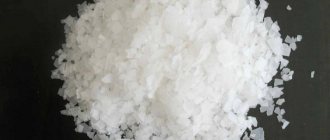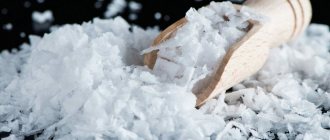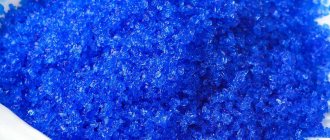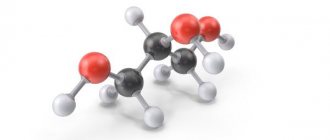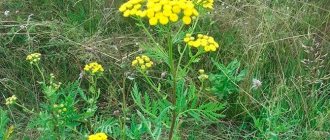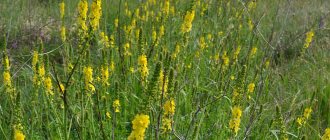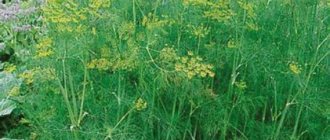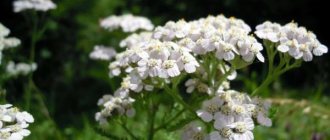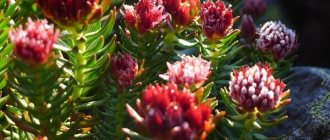Photo: UGC Shepherd's purse is a common weed that has been recognized as a medicinal plant since ancient times. It is used as a component of herbal medicines. Shepherd's purse herb is often used to prevent pathologies of the female reproductive system, as part of hemostatic drugs for internal and external bleeding. Let us consider in detail what is known about the herb shepherd's purse: description, benefits, medicinal properties and contraindications.
What does a shepherd's purse look like?
Appearance of a shepherd's purse.
Photo: Yandex.Pictures Shepherd's purse is an annual herb from the cruciferous (cabbage) family. It has an erect, single or branched stem with a height of 40 to 60 centimeters.
The basal leaves are large, elliptical in shape, entire, notched-toothed, turning into a petiole. The stem leaves are arrow-shaped, with smooth edges. The higher the leaves are, the smaller they become.
The flowers are small, unattractive, white. Located on spaced stalks, densely collected in an elongated raceme, greatly lengthening during fruiting.
Shepherd's purse blooms from early summer until late autumn. The fruits ripen at different times starting in May. The fruit is an inverse triangle-shaped pod with a heart-shaped notch on the upper side.
The shape of the fruit is reminiscent of the shoulder bags worn by Western European shepherds in the 18th century. This was the reason for the name of the plant.
The life cycle of the plant is short. Shepherd's purse is an extremely fruit-bearing and tenacious plant. Young shoots quickly turn into adult plants. In one summer, the grass can produce four generations, dispersing tens of thousands of seeds.
Seeds remain viable for up to six years. Plants that sprouted from seeds in late autumn do not die in winter, but continue to live in the spring of next year.
Description of the plant
Shepherd's Purse - In Latin, Capsella belongs to the Brassica family. This genus includes widespread herbaceous plants, often considered a weed.
There are different types of shepherd's purse. All of them are cosmopolitans. In total, the genus includes nine species, but the most useful herb is the common shepherd's purse, which is also called shepherd's purse.
On Russian territory, the plant is found almost everywhere, except in the Arctic region. It actively grows in fields, along roads, ravines, ditches, and also infests vegetable gardens.
The shepherd's purse weed is an annual plant with a thin spindle-shaped root and an erect stem reaching a height of 0.5-0.65 m.
Based on their general structure, the basal petiolate leaves of the shepherd's purse are divided into string-shaped, notched, traditional whole or pinnately divided, composed of pointed lobes with jagged or smooth edges, united in a rosette.
Smaller stem sessile alternate leaf blades with smooth or notched-toothed edges have an oblong-lanceolate shape. The upper linear leaves have an arrow-shaped base.
The racemose inflorescence of the shepherd's purse is composed of four-membered regular flowers with white obovate petals. The ripening fruit is an inverse triangular-heart-shaped pod, compressed on the sides.
The flattened, oval-shaped seeds do not exceed 2.55 mm in length. One plant produces 40-70 thousand seeds.
Chemical composition
The rich composition of shepherd's purse includes substances beneficial to the body - tannins and proteins. Various acids are available:
- apple;
- fumaric;
- ascorbic acid;
- lemon;
- bursa;
- wine
Carbohydrates and essential oil were detected. Saponins and hyssopin rhamnoglycoside are present. Vitamins enhance the benefits, including choline, riboflavin, thiamine, and phylloquinone. The chemical formula contains phytoncides, carotene, acetylcholine.
History of plant use
Although the plant is considered a malicious weed, this in no way detracts from its medicinal properties. They were known back in Ancient Greece and Rome. In Europe in the Middle Ages it was used as a hemostatic agent.
Interest in the plant arose again during the First World War, when the need for hemostatic agents increased sharply. The entire aerial part of the shepherd's purse is used in medicine.
You can cook green cabbage soup and borscht from young and fresh leaves of the herb. The plant is also suitable for preparing vitamin salads. Ground seeds can replace mustard or pepper.
Planting and caring for shepherd's purse
- Flowering: from April to August.
- Planting: sowing seeds in open ground in early spring.
- Lighting: bright sunlight or partial shade.
- Soil: moist and nutritious.
- Watering: only during periods of prolonged drought.
- Fertilizing: complete mineral fertilizer before budding, although this is not necessary.
- Reproduction: seed.
- Pests: cruciferous flea beetles.
- Diseases: powdery mildew.
- Properties: is a medicinal plant with wound-healing, vasodilating, hemostatic, astringent, anti-inflammatory, diuretic, antifever effects.
Read more about growing shepherd's purse below.
Chemical composition
Basal leaves of shepherd's purse. Photo: Yandex.Pictures
- Carbohydrates and related compounds are found in the plant: sucrose, sorbose, lactose, sorbitol, mannitol, adonitol, aminosucrose.
- Shepherd's purse contains malic, citric, tartaric and organic acids, up to 3% tannins, saponins, bursin alkaloid and essential oil.
- Coumarins, flavonoids, choline, acetylcholine, tyramine, phytoncides, ascorbic acid, vitamin K, rutin, a lot of potassium and phosphorus, iron, copper, chromium, manganese, aluminum, cobalt, titanium were also found.
- The seeds of the plant are rich in fatty oils - from 28 to 30%. They also contain resins, small amounts of allyl mustard oil and ascorbic acid.
Growing
Planting a shepherd's purse
The shepherd's purse flower is so widespread that it does not require special cultivation, but if you want to use it as food regularly, then try to collect the seeds of the plant during the summer. Shepherd's purse is sown in early spring: the plant has a rather long growing season, and with summer sowing, the plant will have time to produce flower stalks this year, but will not form rosettes. When sown in autumn, seedlings will appear next spring.
As soon as the snow melts, find a sunny or semi-shaded area in the garden with moist and nutritious soil and prepare it for planting as you prepare the soil for mustard greens or cabbage. Shepherd's bag seeds are mixed with sand in a ratio of 1:5 and sown over the surface of the plot in even rows located at a distance of 20-25 cm from each other. The top of the crops is only lightly sprinkled with earth. The first shoots may appear in 5-10 days.
- Video of planting Brugmansia in the garden
Rules of care
Water the shepherd's purse only during prolonged drought. The plant does not require loosening the soil between the rows, and the grasshopper is fed once a season with complex mineral fertilizer for flowering plants, although this is not necessary. From time to time, it will be necessary to remove large weeds from the site that are blocking the plant from the sun. Shepherd's purse is resistant to diseases and pests of cabbage crops, but can suffer from cruciferous flea beetles and powdery mildew. Flea beetles can be eliminated by dusting the shepherd's bagworm with ash, and it is better to fight powdery mildew with folk remedies (mullein, ash infusion, soda ash solution) or biofungicides (Fitosporin-M, Alirin-B, Gamair, Planriz or Pseudobacterin-2).
Medicinal use
- Shepherd's purse preparations are effective for various internal bleedings. They cause uterine contractions, lower blood pressure, and constrict peripheral blood vessels.
- Infusions of shepherd's purse stop diarrhea and increase urine output.
- In homeopathy, plant-based preparations are used for all types of bleeding and kidney diseases.
- In Indian medicine - as an astringent, diuretic, antiscorbutic. Shepherd's purse is used for hematuria, ascites, and diarrhea.
- Freshly ground herb is used for compresses for bruises.
- Preparations based on the plant have analgesic, wound healing, antiemetic and antitoxic effects. They enhance intestinal motility and have high phytoncidal activity.
- In Tibetan medicine, the herb is considered the best remedy for stopping hiccups.
- In scientific medicine, infusion and liquid extract of the plant are used in gynecological practice for uterine atony, as a sedative for neuropsychiatric diseases.
Application
The plant is used as food for rabbits.
Food use
In some countries, shepherd's purse is a garden plant; its grass is used to prepare borscht, soups, purees, fresh and dry. Young leaves are used as food for preparing salads, borscht, soups, in the form of puree as a filling for pies, for pickling along with other herbs and vegetables. The leaves are dried for future use (at 100-120°C) and added to first courses. Ground seeds are used instead of mustard
Shepherd's purse medicinal properties, medicinal uses
In scientific medicine, infusion and liquid extract are used in gynecological practice.
A good hemostatic agent after childbirth, abortion, during menopause, and with uterine fibroids. In homeopathy it is used for all types of bleeding and kidney diseases. In India it is used as an astringent, diuretic, antiscorbutic, for hematuria, ascites, and diarrhea. In folk medicine it is used for malignant ulcers and stomach cancer, tumors, cancer and fibroids of the uterus, as a contraceptive. Shepherd's purse delays ovulation and has antibacterial properties. P,S. used in official medicine in many European countries, was included in the VIII and IX editions of the Russian Pharmacopoeia. Infusion and liquid extract of the herb are prescribed for uterine atony and as a hemostatic agent. In China they are used for dysentery and eye diseases, in Mongolia - as a sedative for neuropsychiatric diseases and a wound healing agent. In folk medicine, a decoction of the herb is prescribed for dysentery, gastritis, bleeding, pulmonary tuberculosis with hemoptysis (mixture with oak bark 2:1), malaria, heart disease, liver disease, gynecological and venereal diseases, osteoalgia, vomiting, colds, metabolic disorders , for the treatment of purulent wounds. Herbal extracts lower blood pressure, enhance intestinal and uterine motility, and accelerate blood clotting. An infusion of the herb is prescribed as a hemostatic agent for uterine cancer. Used externally for nosebleeds. In Eastern medicine, the plant was considered an antiemetic. The leaves are used as an astringent and antiscorbutic, for diseases of the ureters and malaria. The seeds are used in India as an astringent, stimulant, antiscorbutic, diuretic, and for ascites. A decoction of the seeds is used as an astringent, stimulant, antiscorbutic, diuretic, and for ascites; water and alcohol extracts have antibacterial properties. Fresh herb juice is a strong hemostatic and mild antihypertensive agent (20-30 drops 4-5 times a day). An infusion of the herb is used for diarrhea, especially bloody diarrhea, cholelithiasis and kidney stones, gout and rheumatism.
Collection and processing of medicinal raw materials
Collection item. Grass.
Collection and processing of raw materials. The grass is collected during flowering, in dry weather, after the dew has dried, cut with a knife or pruning shears no more than 40 cm long from the top; placed without compaction in a basket and immediately sent to dry. It is unacceptable to collect plants with ripe (opened) fruits, as well as plants affected by fungus (with a white coating on the leaves).
The raw materials are placed in containers and dried as quickly as possible.
Drying. Dry the grass in the open air, in the shade in the wind, as well as under sheds or in attics under an iron roof with good ventilation, laying it out loosely in a thin layer.
In good weather, you can dry it outdoors for 5-7 days. Quality of finished raw materials. The raw material is the dried flowering aerial part of the plant with leaves, flowers and unripe fruits from 10 to 40 cm in length. The color of the stems, leaves, and fruits is green, the smell is weak, the taste is bitter. Humidity - no more than 13%; total ash - no more than 10%, ash insoluble in a 10% solution of hydrochloric acid - no more than 2%; foreign impurities: organic - no more than 2%, mineral - no more than 1%. Output of finished raw materials. Approximately 26-28%.
Store in a dry, ventilated area in a cardboard container for 3 years.
Application in official and folk medicine
Preparations of shepherd's purse have a hemostatic and astringent effect, increase the tone of the uterus and smooth muscles of the intestine. The plant has long been used as a hemostatic agent. It is especially effective when used as an infusion for uterine and other bleeding. The astringent properties of the plant are used in the treatment of acute and chronic inflammatory bowel diseases, gastric and duodenal ulcers. Shepherd's purse is sometimes used for diseases of the liver and gall bladder and as an antidiarrheal agent. The infusion can be used for bladder diseases, hemorrhoids and as an antiemetic. Due to its significant content of microelements, especially copper, zinc, manganese and chromium, combined with macroelements such as iron, magnesium, potassium and calcium, the herb can be useful for metabolic disorders.
In folk medicine, the plant is used to lower blood pressure, for wounds, cuts and purulent ulcers. There are indications of the effectiveness of shepherd's purse infusion for typhoid fever. To prepare the infusion, pour 10 g of herb into 1 glass of hot water, leave for 30 minutes and filter through two or three layers of gauze. Take 1 tablespoon 3-4 times a day 20 minutes before meals. Liquid extract of shepherd's purse is prescribed 20-25 drops 2-3 times a day before meals. Fresh juice from the grass in a 1:1 dilution is used as a hemostatic agent. It is instilled into both nostrils for nosebleeds. Undiluted juice is indicated in the form of lotions and compresses for bruises and minor wounds.
Based on the book Phytotherapy
Capsella bursa pastoris L., cruciferous family.
Common names: peasant mustard, heart grass, spoons.
A characteristic feature of this biennial herbaceous plant is a basal rosette of planar-toothed leaves that are spread on the ground or raised. The erect stem can be 20-40 cm in height. The stems can be branched and simple, with few sessile leaves. Blooms and bears fruit all season. On the same plant there are simultaneously buds in the upper part, and blooming four-membered flowers below, and triangular fruits - reverse-heart-shaped pods on legs - even lower. Blooms from March to November.
It is found as a weed in gardens, on arable land, on gravelly places, on roads and slopes, in meadows and pastures overgrown with wild cereals, wastelands and even on walls. It can be collected all year round, but the most favorable time for collecting is the spring months. The plant is pulled out by the roots, freed from adhering soil and hung in bunches to dry in the shade.
Shepherd's purse has a hemostatic effect. Shepherd's purse herb is used in various mixtures and in the form of preparations that are used against ailments associated with menstruation. Shepherd's purse is also contained in so-called blood purification preparations. Recently, information has appeared about the effect of shepherd's purse herb on the functioning of the cardiovascular system. Its effect is similar to that of mistletoe - leveling and regulating for a weakened heart, especially in older people.
Traditional medicine uses shepherd's purse for diseases of the liver and biliary system. As an external rinse and rinse, it has gained a strong position as a remedy against oral infections and for the treatment of poorly healing wounds.
Shepherd's purse in folk medicine
Photo: Yandex.Pictures
- In folk medicine, shepherd's purse, its infusion and fresh juice are used for pulmonary hemorrhages, malignant ulcers and stomach cancer, tumors, cancer and uterine fibroids.
- The infusion helps with dysentery, gastritis, pulmonary tuberculosis, malaria, kidney diseases, gynecological diseases, and colds. The plant can be used to treat purulent wounds.
- Shepherd's purse extract accelerates blood clotting and delays ovulation.
- In folk medicine, freshly squeezed juice from the plant is drunk for kidney and bladder diseases.
- The juice of the herb neutralizes medicinal substances that accumulate in the body in chronic patients when taking medications for a long time. To cleanse the body, drink fresh herb juice 30–40 drops 3 times a day with water.
Contraindications
When using medicinal raw materials, it is important to consider the possible contraindications of shepherd’s purse:
- pregnancy;
- pathologies of the thyroid gland;
- excessive sensitivity to products made from this medicinal plant;
- thrombophlebitis;
- age below 18 years.
Medicinal herbs are prohibited after heart attacks. Caution is necessary when breastfeeding, the presence of kidney stones, and scanty menstruation. The plant should not be used in parallel with medications designed to thin the blood.
You should stop using the bagworm if, after carrying out therapeutic measures using products based on this plant, a skin rash, swelling, difficulty breathing, itching, rapid heartbeat, or intestinal upset appears.
Traditional medicine recipes
For medicinal purposes, shepherd's purse is used along with the stem, leaves, flowers and fruits.
Infusion for the treatment of bladder diseases
- Take 40–50 grams of raw shepherd's purse and pour a liter of boiling water. Wrap and leave for half an hour. Drink the infusion 2-3 times a day, 70 ml.
Hemostatic agent
- Pour one tablespoon of dry shepherd's purse herb into a glass of boiling water. Leave for two hours, strain. Take two tablespoons 4 times a day.
- Liquid extract of shepherd's purse herb (pharmacy) take 25 drops 4-5 times a day.
For liver diseases
- Shepherd's purse, its fresh juice helps with liver diseases and malignant ulcers. For medicinal purposes, it is recommended to take fresh herb juice 40 drops with water 3 times a day.
For rectal prolapse
- Wash the grass, chop it and pour it into a half-liter dark bottle. Fill 3/4 of the volume, add vodka and leave in a dark, warm place for 2 weeks. Use to wash the anus several times a day.
Nose bleed
Photo: Yandex.Pictures
- For nosebleeds as a result of injury or any illness, take 2-3 teaspoons of the dry mixture and pour 200 ml of boiling water. Let it brew for 10 minutes. Strain and drink from 400 to 800 ml of infusion daily.
Shepherd's purse for bone pain
- For bone pain, which occurs with rheumatism, blood diseases, intoxication, and feverish conditions, take 2 teaspoons of shepherd's purse juice with honey 5-6 times a day after meals. The juice should be squeezed from the above-ground parts of young plants.
The recipe cannot be used for thrombophlebitis and pregnancy.
Infusion for treating wounds
- This infusion is for external use for bruises, for treating wounds and cuts. Take 3 tablespoons of dry crushed raw materials and pour a glass of boiling water. Leave for an hour, then strain.
For tendon inflammation
- People of certain professions - stenographers, typists, pianists - often suffer from inflammation of the tendons. For treatment, you can use lotions and compresses from an infusion of shepherd's purse herb. Pour 200 ml of boiling water over a tablespoon of dry herb and let it brew for two hours. Strain the resulting infusion.
Popular recipes
The variety of useful characteristics determines the effective use of shepherd's purse in folk medicine. After consulting with your doctor, it is easy to choose the appropriate prescription for a specific pathological condition.
Bleeding
Since shepherd's purse shows high effectiveness in bleeding of various locations, it is often used to prepare a healing infusion.
To this end:
- 1 tbsp. l. dried crushed grass is poured into an enamel mug.
- Steam 200 ml. boiling water.
- After an hour, the infusion is filtered through a gauze cloth.
Take 1 tbsp every eight hours. l. over the course of two to three days. This treatment is indicated for heavy periods and helps to quickly stabilize the body’s condition in the postpartum period.
If nosebleeds are observed, fresh juice of the shepherd's purse has been successfully used at home:
- Dilute with cool boiled water in equal proportions.
- Inject 3-4 drops of the prepared solution into each nasal passage after eight hours.
Cystitis
Considering the anti-inflammatory properties, the benefits of shepherd's purse are noticeable in the development of cystitis:
- Wash the fresh herbs and chop finely.
- Place in a earthenware plate.
- Grind with a wooden spoon.
- When the juice appears, place the green mass in a gauze napkin.
- Squeeze out the juice.
Add liquid honey to it to taste. Drink 1 tsp. before meals three times a day.
Cold
When treating a cold with shepherd's purse:
- Transfer 2 tsp. dried ground bagel into a ceramic teapot.
- Brew 250 ml. boiling water.
- After 15 minutes, add a little honey to the warm drink filtered through a strainer and drink.
Carry out the procedure in the morning and evening after meals. This restorative anti-inflammatory tea is also useful to drink in the spring-autumn season to prevent colds.
